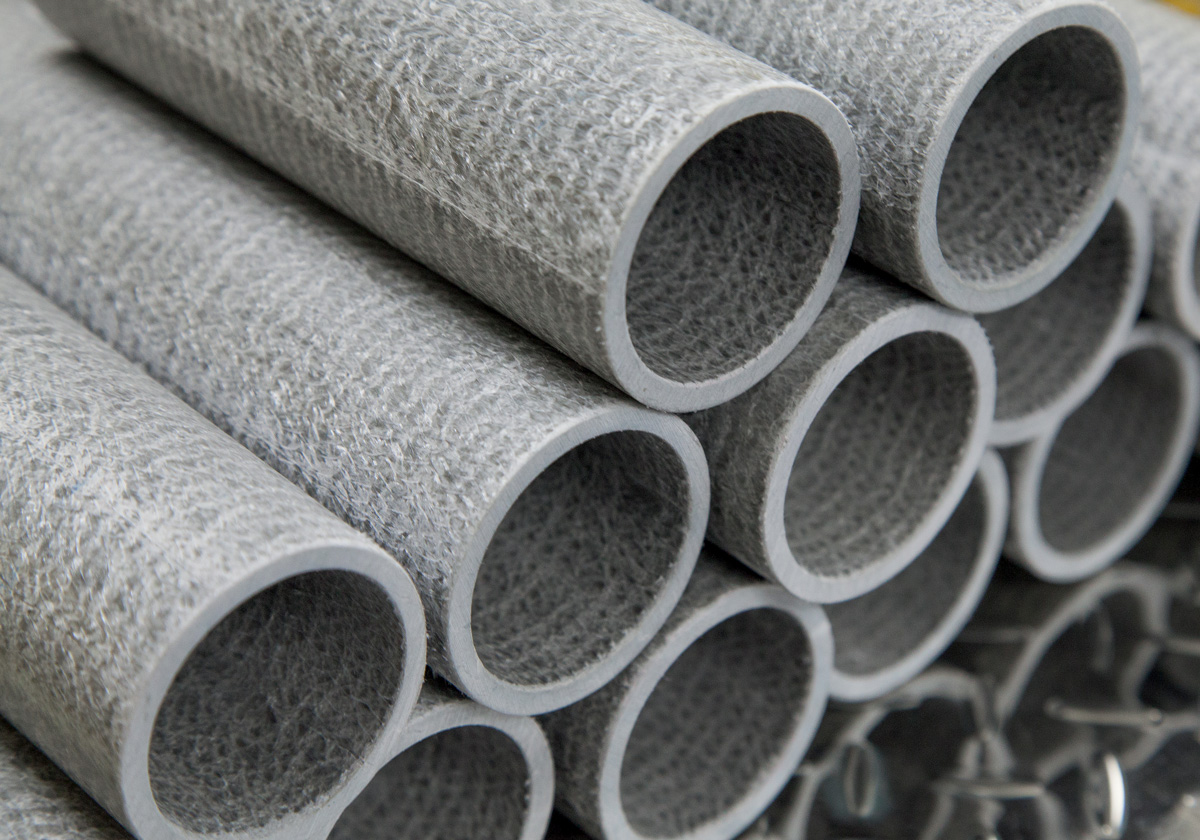| Odporność na korozję |
Niezwykle wysoka odporności na działanie szerokiego zakresu związków chemicznych. Dodatki osłaniające powierzchnię oraz UV tworzą doskonałą odporność na działanie czynników atmosferycznych – konieczne może być jedynie pomalowanie elementów
narażonych na bezpośrednie działanie promieni słonecznych, aby zapobiec płowieniu koloru. Charakteryzuje się odpornością na wilgoć
(nie koroduje) oraz zanurzenie w wodzie pod warunkiem, że końcówki są dobrze zabezpieczone. |
Może powodować korozję elektrochemiczną. Można zwiększyć odporność na korozję poprzez utlenianie anodowe lub zastosowanie innych powłok. |
Może zawijać się, gnić i rozkładać pod wpływem wilgoci, wody i związków chemicznych. Powłoki lub środki zabezpieczające, potrzebne do zwiększenia odporności na korozję lub odporność na gnicie mogą wytworzyć niebezpieczne odpady i/lub spowodować wysokie koszty konserwacji |
Podlega działaniu utleniania i korozji. Wymaga pomalowania lub cynkowania dla wielu zastosowań. |
| Waga |
Bardzo lekki – 80% wagi aluminium
Ciężar właściwy: 1.7 (suszone w piecu)
Lekki – 25% wagi stali (1/2” grubości płyty = 4.7funtów/stopę kwadratową) |
Lekki – ok 1/3 wagi miedzi lub stali |
Ciężar właściwy = .51 (suszone w piecu) |
Może być wymagany sprzęt do podnoszenia, aby przemieścić i zamontować elementy (1/2” grubości płyty = 20.4 funtów/stopę kwadratową) |
| Przewodnictwo elektryczne |
Niskie przewodnictwo elektryczne – duże możliwości zastosowania jako dielektryk |
Przewodzi elektryczność – konieczność zastosowania uziemienia |
Przewodzi elektryczność po namoknięciu |
Przewodzi elektryczność – potencjalne ryzyko wstrząsów |
| Przewodnictwo cieplne |
Izoluje – niewielkie przewodnictwo cieplne 4(BTU/SF/HR/F˚/IN)
Niski współczynnik rozszerzalności cieplnej (4.4 (IN/IN/F˚)10⁶ |
Duże przewodnictwo cieplne (150(BTU/SF/HR/F˚/IN))
Współczynnik rozszerzalności cieplnej 11-13(IN/IN/F˚)10⁶ |
|
Przewodnictwo cieplne 260-460(BTU/SF/HR/F˚/IN) |
| Wytrzymałość |
Wytrzymałość na zginanie (Fu) LW=30KSI, CW=10KSI
Posiada 80% granicy plastyczności aluminium, w przeliczeniu na jednostkę jest bardziej wytrzymały niż aluminium w kierunku wzdłużnym
Wytrzymałość na ściskanie wynosi 30PSI
Wytrzymałość na rozciąganie = 30KSI, CW = 7 |
Wytrzymałość na zginanie (FU) 35KSI
Jednorodny materiał |
Maksymalne zginanie włókna = do 28 PSI
Ściskanie równoległe do ziarna = do 18 PSI |
Materiał jednorodny
Wytrzymałość na rozciąganie = 60KSI
Granica plastyczności = 36KSI |
| Sztywność |
1-1/2 razy tak sztywny jak drewno.
Moduł sprężystości podłużnej LW=2,5 x 10⁶ PSI, CW = 8×10⁶ PSI
Nie odkształca się trwale pod wpływem obciążenia roboczego |
|
Moduł sprężystości podłużnej = do 1.8×10⁶ PSI |
Moduł sprężystości = 29KSI
Moduł sprężystości podłużnej = 29MSI |
| Udarność |
Szklana mata przenosi obciążenie udarowe, aby zapobiec uszkodzeniu powierzchni, nawet w temperaturach poniżej zera. Nie odkształca się trwale przy uderzeniu |
Łatwo odkształca się przy uderzeniu |
|
Może odkształcić się trwale pod wpływem uderzenia. |
Przepuszczalność
EMI/RFI |
Przepuszczalność fal radiowych, EMI/RFI transmisji; wykorzystywane do obudowy i podpórek dla radarów i anten |
|
|
Może zakłócać transmisje EMI/RFI |
Wykończenie i
kolor |
Barwniki dodane do żywicy zabarwiają cały kompozyt. Dostępne są specjalne kolory. Złożone wzory jako wykończenia można tworzyć na życzenie klienta |
Kolor srebrny. Inne kolory wymagają wykonania na gotowo powłok anodowych oraz malowania. Można zastosować wykończenia mechaniczne, chemiczne i galwaniczne |
Trzeba nałożyć podkład i pomalować na dany kolor. W celu zachowania koloru, może być potrzebne ponowne malowanie |
Musi zostać pomalowana na dany kolor. W celu zachowania koloru oraz odporności na korozję, może być konieczne ponowne malowanie |
| Montaż |
Łatwy montaż na budowie przy pomocy prostych narzędzi ciesielskich – stosuje się klejenie i/lub mechaniczne łączenie. Bez palników lub spawania. |
Dobra obrabialność – spawanie, lutowanie twarde, lutowanie lub łączenie mechaniczne |
|
Często wymaga palników do cięcia lub spawania. Cięższy materiał – wymaga specjalnych urządzeń do transportu bliskiego, do wznoszenia i montowania. |
| Koszt |
Nieznacznie wyższe koszty oprzyrządowania; cena za stopę liniową nieznacznie wyższa |
Oprzyrządowanie do łączenia jest raczej tanie.
Cena części porównywalna lub nieznacznie niższa. |
Niższe koszty początkowe |
Niższe koszty początkowe |


